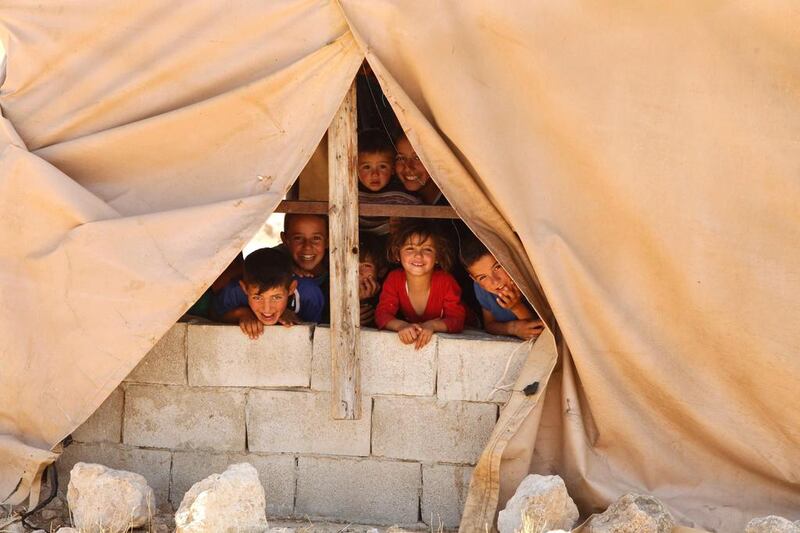KHIRBET ZANUTA, PALESTINIAN TERRITORIES // A Palestinian village in the Hebron hills could cease to exist after a nine-year legal battle with Israeli authorities who say its 167 residents live on an archaeological site.
Israel’s supreme court is expected to make a final decision on the fate of Khirbet Zanuta soon.
The village in the south of the occupied West Bank, about 20 kilometres from the Israeli city of Beersheba, includes makeshift homes made of stones, metal, clay and tyres.
Caves in the area have also been used as homes in the past, and its residents farm the hundreds of hectares of surrounding land, raising sheep and goats.
“I was born here before 1967,” said village head Rashad Al Tal, 65, referring to the year when Israel’s occupation of the West Bank began.
“We lived in a cave and we walked seven kilometres to go to school in Dahriya,” the closest city, he said.
He said villagers began to build houses in the 1970s without permission from the Israeli authorities and were fined for doing so.
Such permits are extremely difficult to obtain for Palestinians living in most of the West Bank.
“We showed them all the ownership papers for our land and asked for construction permits,” said Mr Tal.
While Israeli authorities said structures in the village were illegal and were built on an archaeological site, the villagers suspected other motives.
They alleged that Israel wanted to clear more space for settlers, since a settlement industrial zone called Meitarim was located less than a kilometre away.
Villagers said explosives were used to develop the zone and question why this would have been done if the nearby area was archaeologically important.
Khirbet Zanuta is in what is known as Area C, the part of the West Bank under complete Israeli control.
About 60 per cent of the Palestinian territory falls under that classification, originally set up under the 1990s Oslo accords in an arrangement meant to be temporary.
Israel’s military decides on construction permits in Area C, and they are rarely granted to Palestinians. The military demolishes structures it deems illegal.
That process, along with Israel’s continuous settlement building in the West Bank, has been criticised internationally as contributing to the erosion of the possibility of a two-state solution.
The court case involving Khirbet Zanuta was reaching its conclusion as debate over Israeli demolitions of Palestinian structures in the West Bank intensified.
In 2015, Israel demolished 548 structures in the West Bank, displacing 787 Palestinians, according to United Nations figures.
But during the first four months of this year alone, 598 were demolished, displacing 858 people.
The legal battle over Khirbet Zanuta has been waged since 2007. With the two sides unable to settle, Israel’s supreme court was expected to issue a ruling soon.
Israeli authorities said in court filings that “Khirbet Zanuta is an archaeological site and residents’ presence in the area can have an impact on the site. As a result, they must leave the area”.
Israeli authorities declined further comment other than to say their case was being presented in court.
Human rights activists who support the villagers and their legal battle said claims about the area’s importance as an archaeological site were exaggerated.
“We have consulted Israeli archaeological experts who say that the presence of the residents does not interfere with that of the historical remains,” said Sharona Eliahu-Chai of the Association for Civil Rights in Israel.
Yoni Mizrachi, of the Emek Shaveh NGO, said that “every West Bank village contains remains”, adding that those in Khirbet Zanuta are “neither very important nor very extensive”.
“This is a political issue,” he said. “When they want to expel residents, they say that it is an archaeological site.”
Mr Mizrachi said the village contained remains dating to the Iron Age spanning the Roman, Byzantine and Islamic periods.
But he also alleged that there have been no excavations there since it was declared an archaeological site in 1968, while arguing that in any case the remains “do not belong to Israel, but to Palestine”.
Others have pointed out that Jewish construction is allowed on much more important archaeological sites.
* Agence France-Presse





